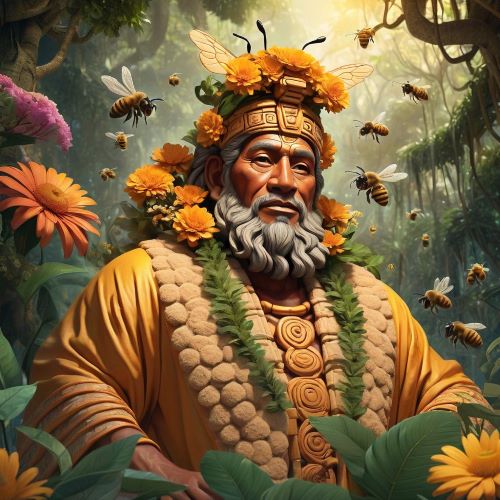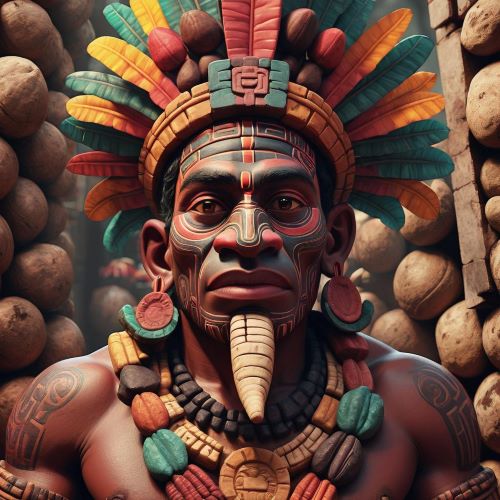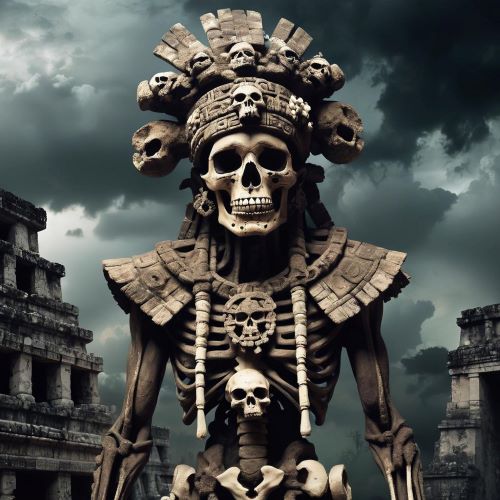Yum Kaax : God of Nature
Listen
At a glance
| Description | |
|---|---|
| Origin | Mayan Mythology |
| Classification | Gods |
| Family Members | Itzamna (Father), Ix Chel (Mother) |
| Region | Mexico, Belize , Guatemala |
| Associated With | Nature, Wild Vegetation |
Yum Kaax
Introduction
The god of forests and wildlife is known as Yum Kaax, and he often oversees various activities such as hunting and agriculture. Some believe that he and Ah Mun are both deities, while others think that they are separate deities. In a situation where both are deities, it would be Yum Kaax who would protect the environment, while Ah Mun would oversee agriculture and maize. In the Mayan codices, which are collections of folding books, the god of forests and wildlife is known as Ah Mun, and he is also the same deity as god E.
Physical Traits
Although the appearance of Yum Kaax is similar to that of other Mayan deities, he has a variety of unique features. For instance, in carvings, paintings, and engravings, he is often depicted as a young and beautiful individual who signifies the beginning of the life cycle of wildlife and plants.
In this image, which is commonly believed to be a representation of Ah Mun and Yum Kaax, the two are seen holding corn ears. It could be interpreted as a representation of either Ah Mun or Yum Kaax. Although both are considered to be different deities, it is believed that the former is a kind deity who doesn’t have a negative connotation.
When he is physically represented, he usually appears as a young man wearing a hat with a corn-shaped head and sometimes with blue and yellow stripes on it. He is also referred to as the lord of forests and is often seen carrying a vessel that holds three ears of corn. According to Mayan scriptures, he is a very handsome god due to his long hair and appearance.
Family
Mayan scriptures from the Yucatan peninsula claim that God Yum Kaax is the offspring of powerful deities Itzamn and Ixchel. He was also among the youngest gods and appointed to guard the Jungle.
Other names
The name of the god of forests and wildlife, which literally means “lord of forests,” is derived from the Maya word “Yum,” which means “lord,” and “Kaax,” which means “the wild.” It is believed that this name has been used for a long time to refer to the god.
Powers and Abilities
During the pre-Columbian period, the god of forests was regarded as a significant deity in the Maya pantheon. Farmers would often invoke his name and offer him their first harvests, which are usually carved from the forest, to ensure that their fields stay protected from wild animals. In the wilderness, hunters would often take off their shirts and spread them over several stakes in the ground in an attempt to find a deer. This practice is believed to be a ritual that involves Yum Kaax.
As a protector of wildlife, God Yum Kaax also protected hunters. Before they go hunting, they would typically ask the god for protection and permission. If they are cruel or act irresponsibly, they might invoke his wrath. The god of rain was also known to protect Yum Kaax. Rain is regarded as a vital element in the life cycle of humans and plants, making it an intrinsically linked deity with the Mayans.
Modern Day Influence
Even though the religious cult that once existed has vanished, the god of rain and forests still receives recognition in modern times. Although the Maya gods aren’t worshipped as they once were, hunters still perform the ritual prior to going hunting. According to a legend, if a hunter doesn’t ask for permission from Juan T’ul before going into the jungle, he might get lost.
Even though they may be safe to return home, they may still experience some losses due to the effects of the wild. Juan T’ul believed that the lives of the animals in the wild were protected by God Yum Kaax. Names for the spirit and legends vary depending on the region, but most commonly, people refer to him as a protective deity.
Frequently Asked Questions
What is lorem Ipsum?
I am text block. Click edit button to change this text. Lorem ipsum dolor sit amet, consectetur adipiscing elit. Ut elit tellus, luctus nec ullamcorper mattis, pulvinar dapibus leo.
What is lorem Ipsum?
I am text block. Click edit button to change this text. Lorem ipsum dolor sit amet, consectetur adipiscing elit. Ut elit tellus, luctus nec ullamcorper mattis, pulvinar dapibus leo.
What is lorem Ipsum?
I am text block. Click edit button to change this text. Lorem ipsum dolor sit amet, consectetur adipiscing elit. Ut elit tellus, luctus nec ullamcorper mattis, pulvinar dapibus leo.
What is lorem Ipsum?
I am text block. Click edit button to change this text. Lorem ipsum dolor sit amet, consectetur adipiscing elit. Ut elit tellus, luctus nec ullamcorper mattis, pulvinar dapibus leo.
What is lorem Ipsum?
I am text block. Click edit button to change this text. Lorem ipsum dolor sit amet, consectetur adipiscing elit. Ut elit tellus, luctus nec ullamcorper mattis, pulvinar dapibus leo.







